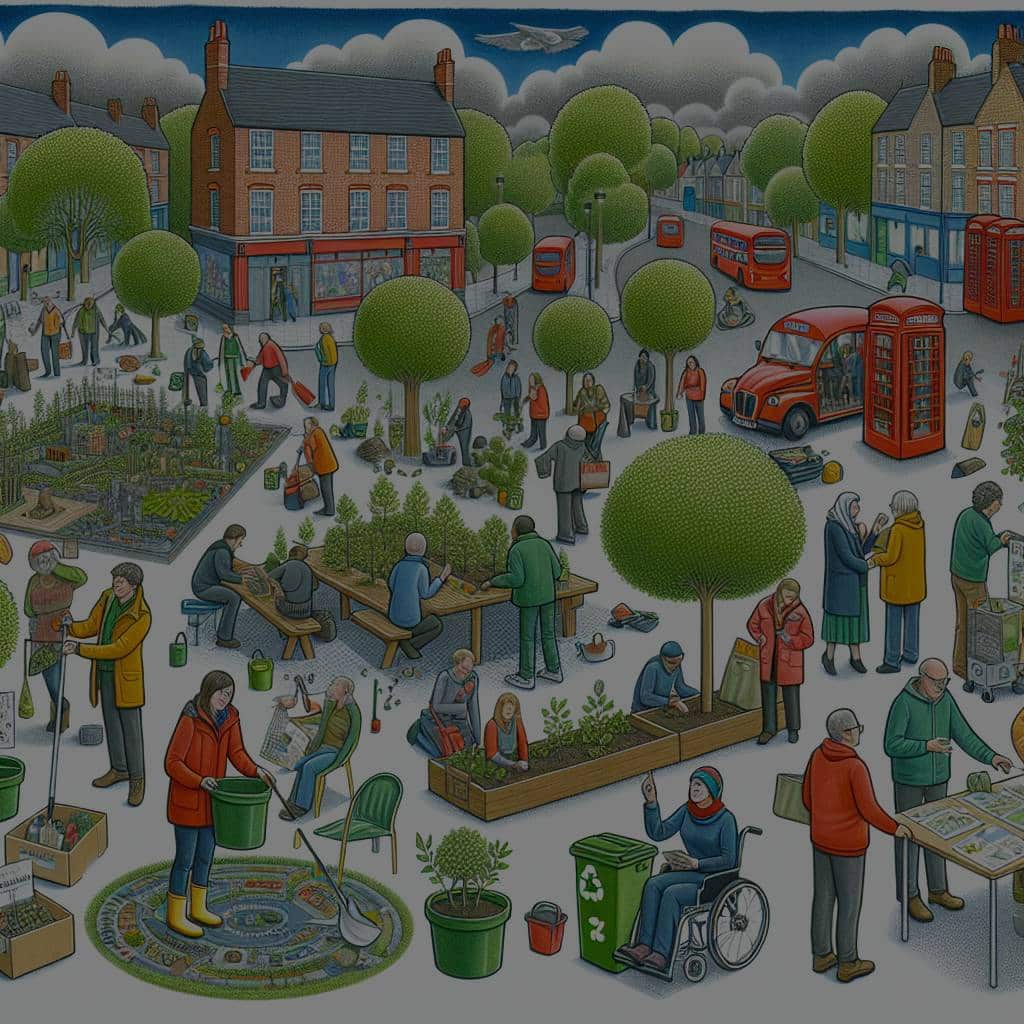Climate change is a pressing issue that affects us all. It’s not just up to governments or big corporations to tackle this challenge. Every one of us, from every walk of life, can play a part in combating this global threat. More and more, people are realizing the power they hold as members of their local communities to bring about meaningful environmental change. In the UK, grassroots environmental movements are gaining momentum, as people gather together to engage in local activism and drive forward policies that protect and restore the environment. In this article, we’ll walk you through how you can spark a successful grassroots environmental movement in your community.
1. Identifying the Local Environmental Issues
Every place has its unique set of environmental challenges. The first step in creating a successful grassroots movement is understanding what those challenges are in your community. Research into the local environment will be a crucial first step. Look at how climate change has already affected your community and what future impacts may be if no action is taken. Understand what environmental policies are currently in place and where there is room for improvement. Once you’ve identified the specific issues, it will be easier to rally support and work towards change.
In parallel : What are the critical factors for UK startups to secure venture capital funding?
2. Building a Diverse and Inclusive Movement
A successful grassroots movement is one that reflects the diversity of the community it represents. It’s important to engage with people of different ages, backgrounds, and walks of life. Reach out to local schools, churches, businesses, and social groups. Encourage everyone to join, regardless of their knowledge or experience with environmental activism. A diverse movement is a strong movement, that will have the power to bring about greater social change.
3. Mobilizing your Community
Once you have a core group of motivated individuals, it’s time to start mobilizing your community. Organize meetings and workshops to educate people about the environmental issues you’ve identified and how they can help. Use social media to spread your message and engage with people. Support each other and create a sense of community around your cause. Remember, the power of grassroots movements lies in their ability to mobilize and engage people at the local level.
Topic to read : What are the best practices for supporting mental health in UK’s education system?
4. Advocating for Policy Change
While individual actions can make a difference, systemic change is necessary to tackle climate change effectively. This means advocating for policy change at the local level. Develop a clear, realistic policy agenda that addresses the environmental issues you’ve identified in your community. Work with local government officials, lobby for your cause, and make your voice heard. Policy change may seem daunting, but it’s a crucial part of creating lasting environmental change.
5. Sustaining your Movement
Creating a grassroots environmental movement is not a one-time effort. It requires ongoing commitment and work. Keep your community engaged by celebrating successes, no matter how small they may seem. Regularly update your members about the progress you’re making and the impact of their actions. Provide opportunities for people to take on leadership roles and help shape the future of the movement. Remember, every action counts, and together, you can create a better future for your community and the planet.
Starting a grassroots environmental movement in your local community is not an easy task, but it is certainly a rewarding one. By identifying local issues, building a diverse movement, mobilizing your community, advocating for policy change, and sustaining your work, you can make a significant impact on the environment. Remember, the power to bring about change lies in your hands. So, let’s get started and make a difference in our communities today!
6. Fostering Partnerships with Local Environmental Organizations
Forming alliances with existing environmental organizations in your area can significantly enhance the impact of your grassroots movement. These organizations can provide invaluable resources, insights, and guidance based on their experience tackling similar challenges. They can also lend credibility to your efforts and help garner more local support.
Take time to research and reach out to organizations such as local chapters of Friends of the Earth, environmental justice groups, and other action groups. Don’t hesitate to express your campaign’s objectives and ask for their support. Remember, a united front is often more powerful and effective in driving systemic change. Collaboration can extend your reach, amplify your voice, and strengthen your ability to influence policy and community behaviors.
In return, your grassroots environmental movement can energize and rejuvenate established organizations with fresh perspectives and renewed passion. It’s a reciprocal relationship that benefits all parties involved.
Also, explore partnerships outside the environmental sphere. Local businesses, schools, and faith groups often have strong community ties and can be mobilized to support your cause. By fostering a broad coalition, your campaign will gain more robust backing, making the fight against climate change a community-wide effort.
7. Taking Direct Action
While advocacy and policy change are instrumental in combating climate change, direct action is equally important. Direct action includes the tangible steps your community takes to address the environmental issues at hand. This could be anything from organizing a local clean-up day to starting a community garden or launching a recycling program.
Direct action is a crucial component of your grassroots environmental movement as it allows community members to participate actively and see the results of their efforts firsthand. It fosters a sense of ownership, responsibility, and empowerment among community members. These actions, though seemingly small, have far-reaching effects and send a powerful message about your community’s commitment to environmental stewardship.
Remember, direct action is about more than just one-off events. It’s about creating lasting habits and practices within your community that contribute to long-term sustainability. By fostering a culture of environmental consciousness and stewardship, you’re not only addressing immediate concerns but also shaping the future of your community for the better.
Conclusion: Be the Change in Your Community
Creating a successful grassroots environmental movement in your UK community may seem like an overwhelming task, but remember, every journey begins with a single step. By identifying local environmental issues, building a diverse and inclusive movement, mobilizing your community, advocating for policy change, sustaining your movement, forging partnerships, and taking direct action, you are not only contributing to the fight against climate change but also empowering and transforming your community in the process.
Remember, the climate crisis will not be solved by a single action, group, or policy. It requires collective action, persistent advocacy, and a steadfast commitment to change. It begins with you, in your local community, inspiring and mobilizing others to take action.
So, let’s rise to the challenge, harness the power of grassroots activism, and make a real difference in protecting our planet. After all, it is not just the earth we are saving, but our future, and the future of generations to come.











